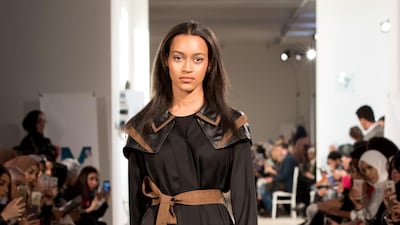Fashion is political, particularly when it comes to women, and what Muslim women wear is especially newsworthy.
When a Muslim woman decides to cover, she might do it for a myriad of reasons: submission to faith, an aspiration to be modest, a sign of pride in her faith, a desire to reject objectification, a reaction of the body image pressures of today’s fashion and beauty industries, a sense of comfort or breaking with convention. These and many other motivations are woven through her choices and mean what she wears might have multiple meanings and those meanings ebb and flow through her life.
Yet what her fashion choices mean is far too often not expressed from her viewpoint but how others interpret her clothing. Other people decide that her clothes mean she is oppressed or submissive. Or that she is only a good woman if she covers. But few bother to listen to her to understand what it means to her, why she makes these choices and how the meaning of those choices can fluctuate.
In western fashion discourse, clothing for women has been pegged to the idea of liberation. And this liberation has been tied to shorter hemlines and skimpier silhouettes. Those Muslim women who desire to cover more, rather than less, are deemed by the western ideals of beauty to be incompatible with fashion and regressive. In fact, certain quarters of the fashion industry have been angry at the development of modest fashion because they believe that offering clothing that covers is backwards and barbaric.
In the midst of this heated political war over Muslim women’s bodies, women who choose to cover see instead the availability of clothing to suit their aspirations as a form of liberation.
There is, of course, functional liberation. This is clothing that allows them the coverage to then go out and do the things they want to do. The launch of Nike's pro hijab, featuring Emirati ice skater Zahra Lari, is the perfect example. This new piece of clothing by a global brand offers women who choose to cover their heads the ease to engage in sports that have not been globally available before. Such products have in fact been developed over the last decade by smaller brands, but a global statement of this magnitude is powerful for Muslim women who feel seen and finally recognised.
There is also emotional liberation that allows their own bodies to become the canvas for self-expression. There is power in creating a new look to reflect their ownership, not just of their bodies but as a manifestation of the world view that they hold.
It’s why the modest fashion industry has been growing exponentially for more than a decade, bringing with it hundreds of new fashion labels, from affordable mass market fashion right through to the most luxurious and haute couture lines. In fact, it is increasingly filtering into global consciousness, to the point where global celebrities like fashion designer Victoria Beckham and Farah Storr, the editor of Cosmopolitan magazine in the UK, can be seen sporting clothes with modest influence.
It's also why Dubai will host Modest Fashion Week from December 8, bringing together a whole new slew of designers, celebrities and influencers, who find empowerment through this new medium of self-expression.
_________________
Read more on Modest Fashion Week
Franka Soeria and Özlem Sahin, duo behind Modest Fashion Week on their vision and a global shift
Modest Fashion Week is coming to Dubai
'Covering the body feels more mysterious and appealing'
_________________
This is a grassroots women’s movement and one where Muslim women have a chance to use their energy and collective commercial muscle to drive change for women in a broader sense. Women have been pushing the fashion industry to be more representative and less singular in their depiction of the perfect woman as tall, white and skinny. A lot of debate has centred on size zero models, catering for older women, skin colour and body type.
But the voices of Muslim women in the global fashion conversation can be an immense source of power in driving women's aspirations for different forms of self-expression.
When we see the catwalks at modest fashion weeks, we shouldn’t just be seeing a runway. They are also a platform for global change.


